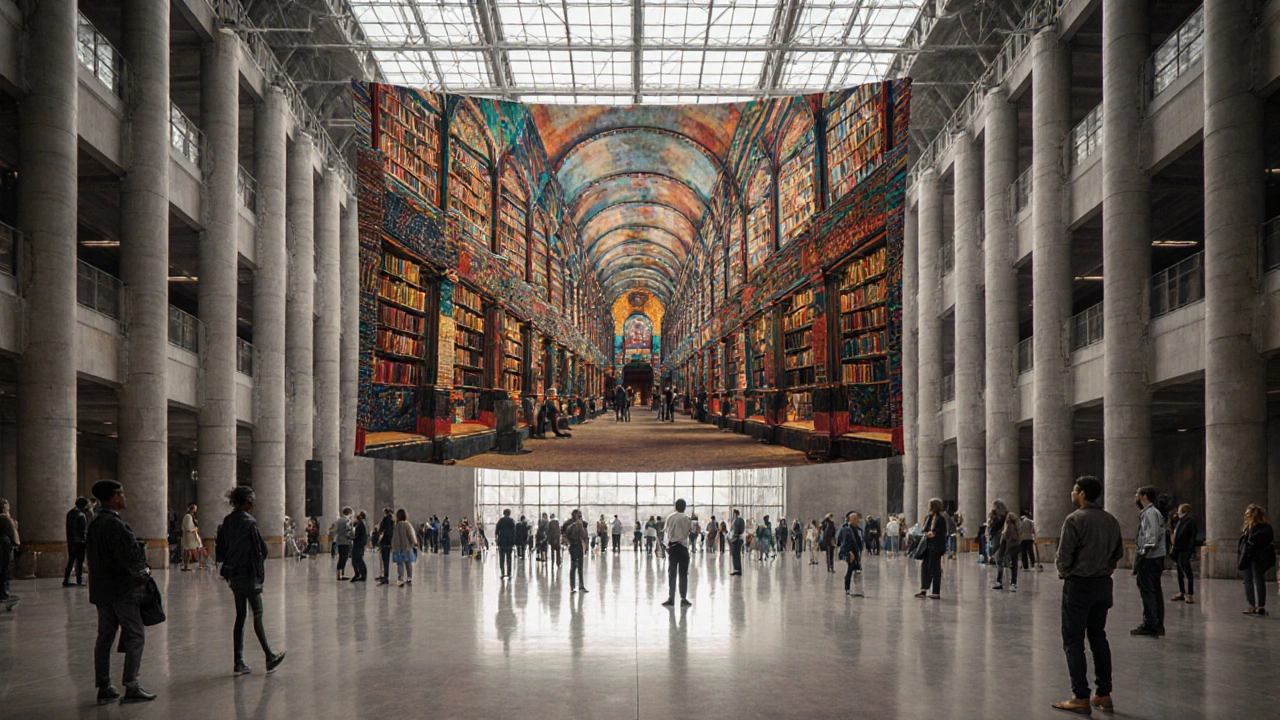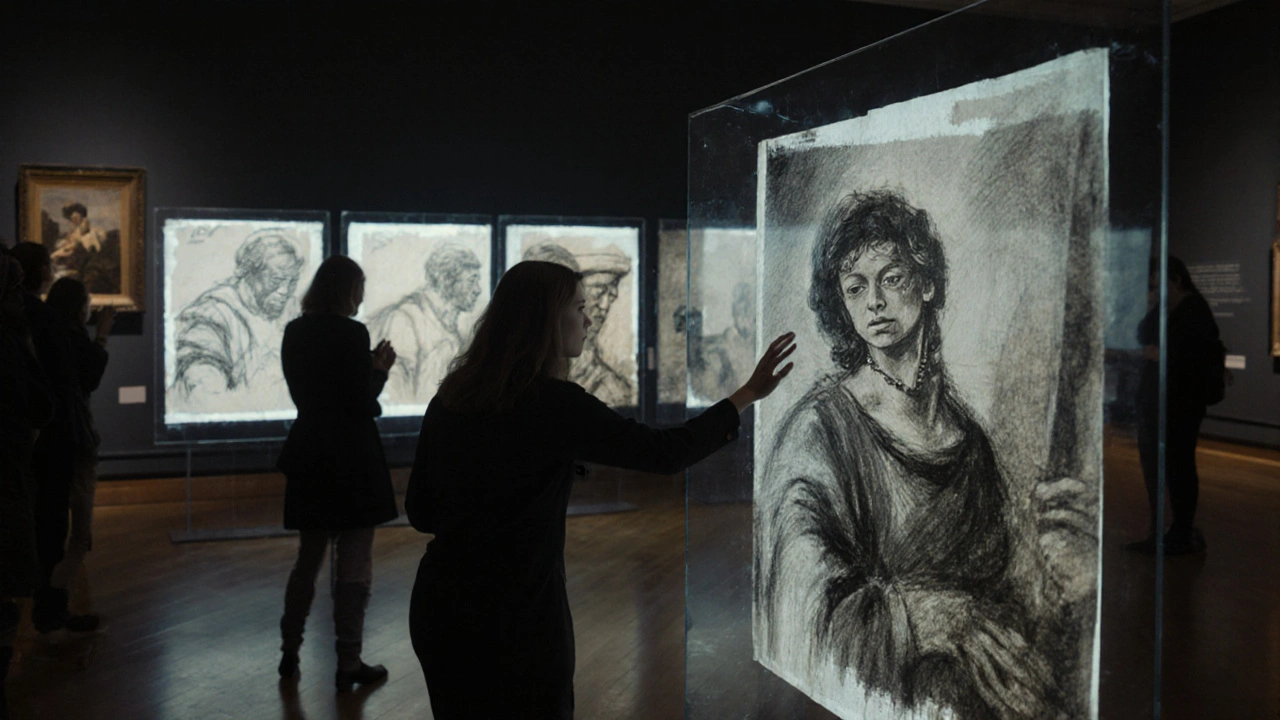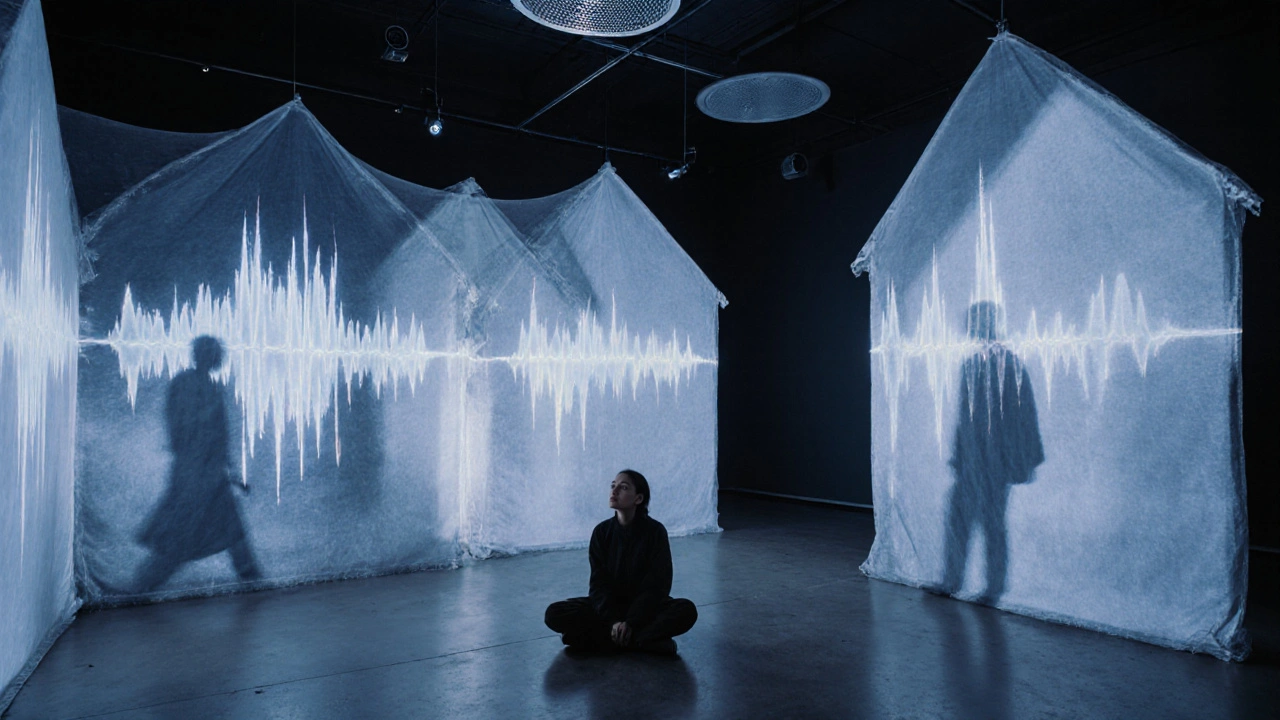
London’s art scene in 2025 isn’t just busy-it’s exploding. From hidden basement galleries in Shoreditch to the grand halls of the South Bank, the city is hosting more exhibitions than ever before. If you’re planning a visit, you don’t want to waste time scrolling through outdated lists. This guide covers every major exhibition opening this year, what’s actually worth seeing, and where to go when you’re tired of crowds.
What’s New in London’s Art Scene This Year?
2025 is the year London stopped playing it safe. Galleries are taking risks. The Tate Modern a leading modern and contemporary art museum on the South Bank, known for its massive Turbine Hall installations and bold curatorial choices is opening a solo show for Nigerian-British artist Yinka Shonibare CBE, featuring over 40 new textile sculptures that challenge colonial narratives. It’s not just art-it’s a conversation.
The National Gallery home to Western European paintings from the 13th to 19th centuries, including works by Van Gogh, Turner, and Botticelli is doing something unusual: they’ve pulled 12 rarely seen Caravaggio sketches from storage and paired them with digital reconstructions showing how they evolved into finished masterpieces. You can see the brushstrokes change in real time on touchscreens beside each piece.
Smaller spaces are stepping up too. The Whitechapel Gallery a public art gallery in East London, known for launching avant-garde artists since 1901 is hosting the UK premiere of "Echoes of the Unseen", a mixed-media installation by 27-year-old Syrian refugee artist Layla Nour. The piece uses soundscapes recorded in refugee camps and projected onto fabric walls shaped like abandoned homes. It’s quiet. It’s powerful. And it’s sold out every weekend.
Must-See Exhibitions This Year
Not every show deserves your time. Here are the five that actually matter in 2025:
- Tate Modern: "Yinka Shonibare: The Fabric of History" - Opens February 14. Features 42 new works using Dutch wax fabric to rewrite colonial history. Don’t miss the 20-meter-long tapestry titled "The British Library".
- National Gallery: "Caravaggio: Sketches Revealed" - Runs March 1-August 31. The only place in the world where you can see these 12 preparatory drawings side-by-side with their final versions.
- Victoria and Albert Museum: "Design for the Future: Sustainable Fashion 1990-2025" - Opens April 5. Includes garments made from mushroom leather, ocean plastic, and algae dye. One dress took 18 months to grow in a lab.
- Royal Academy: "Women Who Changed British Art" - Opens May 10. A 100-year retrospective featuring 60 artists, including Barbara Kruger, Tracey Emin, and new voices like Chloe Chen, whose AI-generated portraits sparked national debate last year.
- Southbank Centre: "Light & Sound: Immersive Worlds" - Runs June 1-September 30. A multi-sensory experience using projection mapping, scent, and vibration. Walk through a forest that responds to your footsteps.
Where to Go When You Need Space
Big names draw crowds. But if you want to breathe, head to these quiet gems:
- Chisenhale Gallery - A small, nonprofit space in Bow. No ticket lines. No gift shop. Just experimental video and sound art by emerging artists. Free entry.
- The Hepworth Wakefield (London Pop-Up) - Yes, it’s normally in Yorkshire. But in 2025, they’ve opened a temporary satellite in a converted 1920s warehouse in Peckham. Their minimalist sculptures feel like a calm after a storm.
- Camden Art Centre - Tucked behind a laundromat in NW5. Their summer show features 12 artists who paint with soil, ash, and tea. No labels. No explanations. Just quiet observation.

How to Avoid the Lines (And Save Money)
Tickets for Tate Modern and the Royal Academy sell out weeks ahead. Here’s how to get in without paying £25:
- Join as a member - Most major galleries offer free entry for members. Annual membership at Tate is £75, but you get unlimited access, exclusive previews, and discounts on events. If you plan to visit 3+ times, it pays for itself.
- Go on free days - The National Gallery is always free. So is the British Museum’s art wing. But for paid galleries, check their websites: many offer free entry on the first Thursday of the month (Tate Modern, Whitechapel, and V&A all do this).
- Visit in the morning - Crowds peak between 11 a.m. and 3 p.m. Arrive at opening (10 a.m.) and you’ll have entire rooms to yourself. The lighting is better too.
- Use the London Pass - If you’re planning to hit 4+ paid exhibitions, the London Pass includes entry to Tate Modern, Royal Academy, and V&A. It costs £99 for 3 days. Worth it if you’re serious.
What’s Changing in 2025?
This year, London galleries are finally listening to their audiences. More exhibitions are designed for neurodivergent visitors: quiet hours, reduced lighting, sensory maps, and touch-friendly displays are now standard at Tate Modern, V&A, and the Serpentine.
Accessibility isn’t just ramps anymore. The Serpentine Gallery a contemporary art gallery in Kensington Gardens, known for its experimental architecture and cutting-edge exhibitions has partnered with a deaf artist collective to create tactile audio guides-vibrating wristbands that translate sound into rhythm. You don’t hear the music; you feel it.
Also new: all major galleries now offer digital previews. Before you go, scan the QR code on their website and you’ll get a 10-minute 360° walkthrough of the exhibition. You can spot the pieces you love and skip the rest. No more wandering aimlessly.
What to Bring (And What to Leave at Home)
Don’t show up unprepared.
- Bring: A reusable water bottle (most galleries have refill stations), a light jacket (galleries are freezing), and your phone for QR codes.
- Leave at home: Large bags (they’re not allowed in most galleries), selfie sticks, and expectations of silence. Some installations are loud, interactive, or require you to sit on the floor.
- Download the Art UK app: It maps every public artwork in London-statues, murals, even paintings in hospital waiting rooms. You’ll discover hidden gems you never knew existed.

Where to Eat After
Forget the gallery café. These spots are better:
- St. John Bread and Wine - Near the National Gallery. Roast vegetables, bone marrow toast, and wine by the glass. No reservations needed before 5 p.m.
- Polpo - In Soho, close to the Serpentine. Small plates, great wine, and a vibe that feels like a Venetian trattoria.
- The Coffee Works - Just outside Tate Modern. Their cold brew is brewed with Ethiopian beans and served in ceramic mugs you can keep. It’s the only place where you can sit and talk about art without feeling rushed.
Final Tip: Don’t Try to See It All
London has over 120 galleries. You can’t see them all in one trip. Pick one or two exhibitions that speak to you. Sit with one piece. Let it sink in. That’s what art is for-not checking boxes.
2025 isn’t about how many shows you hit. It’s about the one that stays with you.
Are London art exhibitions free in 2025?
Some are, some aren’t. The National Gallery, British Museum, and Tate Britain are always free. Major exhibitions at Tate Modern, Royal Academy, and V&A usually charge £18-£25, but they offer free entry on the first Thursday of each month. Always check the gallery’s website before you go.
How far in advance should I book tickets?
For popular shows like Yinka Shonibare at Tate Modern or Caravaggio at the National Gallery, book at least 4-6 weeks ahead. Weekends sell out fastest. If you’re flexible, midweek visits (Tuesday-Thursday) have more availability and fewer people.
Is the London Pass worth it for art lovers?
Yes-if you plan to visit at least four paid exhibitions in a short time. The £99 3-day pass includes Tate Modern, Royal Academy, V&A, and the Wallace Collection. If you’re only going to one or two, buy tickets individually. Membership is better for repeat visits.
Can I take photos in London galleries?
Most allow non-flash photography for personal use, but no tripods, selfie sticks, or professional equipment. Some installations ban photos entirely-look for signs or ask at the desk. Always respect the rules. Some artists request no images to protect their work.
Are there guided tours available?
Yes. Most major galleries offer free 30-minute highlights tours daily at 11 a.m. and 2 p.m. For deeper dives, paid expert tours cost £10-£15 and last 90 minutes. They’re worth it if you want context beyond the labels. Book online in advance.
What’s the best time of year to visit London for art?
Spring (April-June) is ideal. Exhibitions open after winter, the weather’s mild, and crowds haven’t peaked yet. Summer (July-August) is busy but has the most openings. Avoid December-many galleries close for holidays or rotate exhibits.
Next Steps: Build Your Own Art Itinerary
Start by picking one exhibition that sparks your curiosity. Then choose one quiet gallery nearby to balance it out. Use the Art UK app to find a public sculpture or mural on your walk. Bring a notebook. Write down one thing that surprised you. That’s how you remember art-not by how many places you checked off, but by what stayed with you.